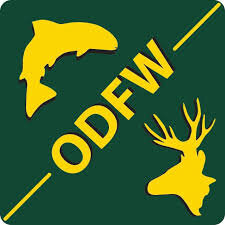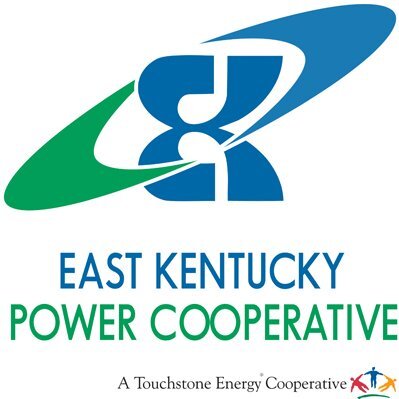Barrier 1: Perception by broader constituencies that fish and wildlife agency only cares about and serves hunters and anglers
Given the dependence of state fish and wildlife agencies on hunting and fishing license sales and on federal funding sources such as the Wildlife and Sport Fish Restoration Programs (Pittman-Robertson and Dingell-Johnson acts), the public frequently perceives that agencies focus solely on hunters and anglers. For some fish and wildlife agencies this may be the case, but states also allocate resources to broader fish and wildlife conservation through the State Wildlife Grant and Tribal Wildlife Grant programs, Section 6 of the Endangered Species Act and other federal and state programs. Additionally, some constituents are not aware fish and wildlife agencies exist or that fish and wildlife must be managed. Movies, television images, social media, and urbanization are also contributing to an increase in anthropomorphizing of wildlife by many people.
Strategy 1: Demonstrate the agency recognizes, represents, values, and respects broader constituencies
Step 1: Identify the full suite of constituencies who may be served by and engaged with the agency and decide which to engage.
It is important that an agency systematically evaluate the universe of constituencies who could be engaged. Because no agency has the capacity to engage every constituent, and some constituencies will not be receptive to engagement, the agency needs to set priorities to determine the strategies and tactics that should be employed. It is important that agency leadership set an expectation that engaging broader constituencies is important. Interdisciplinary teams that include social scientists can assist with constituency identification.
Tactic 1: Use existing information or engage social science experts in the identification of key served and underserved constituencies and decide which to engage.
Social scientists should be consulted to identify and prioritize constituencies and their leaders and influencers. The identification process should include existing key constituencies such as hunters, anglers, and the sporting industry.
Constituent culture success story: social science application
Colorado’s Wildlife Council oversees the design of mediabased information programs to educate the public about the benefits of wildlife-related recreational opportunities in Colorado. It is funded by a $1.50 surcharge on hunting and fishing licenses. When marketing research showed that Colorado’s “Hug A Hunter” campaign was not resonating with the public, the Council decided to launch a new campaign, “This is the Wild Life” to appeal to broader audiences.
Step 2: Assess what is and is not being done by the agency that reinforces perceptions of broader constituencies.
Tactic 1: Use social science, marketing, and communications experts to assess constituent perceptions about the agency.
It is important to understand the perceptions various constituencies have about the agency. Questions such as who they feel is served by the agency, what they believe the purpose of the agency is, and their level of trust in the agency will give insight into their beliefs and misconceptions. Regional or cultural differences in perceptions should also be evaluated.
Tactic 2: Evaluate agency practices, employee behaviors, and communications to identify if messaging style, content, channels, etc., reinforce perceptions.
The way an agency engages in communication and the channels it uses can affect public perceptions. Employee conduct and communication processes should be examined to determine whether the delivery style or mode should be changed or modernized. The agency’s website, press releases, social media, and other communication tools should be evaluated to determine if the imagery used is representative of public interests and demographics. Messaging used by the agency should be tested to ensure it is clear and resonates with broader constituencies. Agendas used at governing body meetings should be reviewed to ensure they represent the interests of, and are understandable to, broader constituencies and portray commission/board members as representative of the public they serve.
Tactic 3: Evaluate agency staff and constituents' values and biases and provide safe forums for staff discussions.
How reflective agency staff are of the public’s diverse wildlife values and interests can affect how they work with broad constituencies. An evaluation of staff and the public’s outdoor interests and wildlife value orientations could help identify conscious or unconscious bias. A forum that provides an open and nonjudgmental environment for discussion will help promote understanding and acceptance of differences. The America’s Wildlife Values study could serve as a resource to help agency staff better understand the impacts of societal change on fish and wildlife conservation.
Tactic 4: Identify what experiences constituents want and determine how the agency can provide those experiences or services.
To better serve broader constituencies, the agency should ask them what they want and need. If there is a need for more places for wildlife viewing, the agency could add appropriate Wildlife Management Areas to Google Maps and promote birding or wildlife viewing in addition to hunting and fishing. Using social media creatively could help market new and different outdoor experiences to broader audiences. Videos like the Nature Rx series can help promote the values of nature and the outdoors.
Constituent culture success story: stakeholder engagement
Oregon’s Department of Fish and Wildlife developed a strategic stakeholder engagement strategy and encouraged staff to look for opportunities to engage key influential stakeholders. Strategic outreach guidelines were developed for staff to select the best outreach approaches to reach important underserved audiences.
Constituent culture success story: reward staff
The Alabama Department of Conservation and Natural Resources and the Arizona Game and Fish Department provide incentives to staff who engage with broader constituencies.
Step 3: Partner with identified constituencies to establish and implement strategies that result in fostering relationships, trust-building, and engagement.
Tactic 1: Develop and implement a communications strategy with messaging to change perceptions about who the agency serves.
A communications strategy should be developed and implemented that will change inaccurate or reinforce accurate perceptions about the agency. The strategy should use tested messaging and imagery that will resonate with and persuade broader constituencies to change their perceptions about who the agency serves. Partnerships with faith-based organizations that are already aware of the connection between quality of life and healthy ecosystems can help the agency reach broader audiences. The Association of Fish and Wildlife Agencies’ “Making It Last” campaign is an example of a communications approach that can help change perceptions by increasing awareness of the comprehensive role of fish and wildlife agencies.
Tactic 2: Invest in new, and support current, programs that provide experiences and services that broad constituencies want.
Investment in new, and support of current, programs that serve broader constituencies can help an agency connect with more diverse audiences. Nature-viewing and volunteer programs such as Master Naturalist or Master Wildlife Conservationist can help engage people of all ages in exploring wildlife and the outdoors. Birding or pollinator trails can serve people with specific wildlife interests. The Wildlife Viewing and Nature Tourism Academy can provide practical hands-on training for staff interested in starting or enhancing wildlife viewing opportunities.
Tactic 3: Recruit and train new employees whose wildlife value orientations and outdoor interests more closely resemble broader constituencies.
As the public’s wildlife value orientations and outdoor interests change, agencies may need to hire new staff with different experiences and competencies. An agency can work with universities to identify the skills and training needed for new and existing employees to meet changing workforce demands.
Tactic 4: Seek expertise or provide training in social science, strategic thinking, communications, outreach, education and marketing to agency staff to improve engagement and service with broader constituencies.
Fish and wildlife agencies have historically been comprised largely of staff trained in fisheries and wildlife sciences. Today, growing demands on agencies require them to have more diverse staff who are trained in social science, marketing, education, organizational leadership, and other arenas. Agencies should hire experts in these fields or provide training to new and existing staff and volunteers. Core competencies in emotional intelligence, cultural awareness, diversity, and inclusion can help agency staff work more effectively with broader constituencies. Agency leaders should set high expectations for staff and volunteers that these new skills are necessary to serve broader constituencies.
Tactic 5: Support and reward employees for regularly engaging broader constituencies.
Some agency staff are self-motivated to engage with broader constituencies, but others may need incentives to do so. Agency leaders should support and encourage staff to work with more diverse audiences, even when it stretches staff. Rewards could include recognition, increased compensation, or other means.
Tactic 6: Participate in organized approaches to connecting with target communities.
The agency should strive, when possible, to meet with the public in community settings. Local advisory groups, meetings with community leaders, and other forms of civic engagement will help the agency reach and serve broader constituencies. These settings can provide a convenient and relaxed setting to gain a better understanding of broader constituencies’ needs, concerns, and interests. Staff must be willing to listen and be receptive to ideas about desired services and programs. The Metropolitan Group’s eight steps to increasing relevance, relationships, and results is a good resource on taking a multicultural approach to communication.
Constituent culture success story: roundtable
Nebraska Game and Parks hosts a Conservation Roundtable — a group of diverse partners that meets regularly to discuss fish and wildlife issues.
Constituent culture success story: attracting constituents
The New York Department of Environmental Conservation uses the “I Bird NY” brand to promote birding and sponsors a bird-finding contest. They also use the “Becoming an Outdoors-Woman” program to promote inclusivity.
Constituent culture success story: developing expertise
The Texas Master Naturalist program trains a corps of natural resource volunteers who provide 425,000 hours per year in the form of conservation outreach to urban audiences, connecting conservation partners, improving outdoor recreation, improving or creating nature access, and reaching nontraditional audiences.
Constituent culture success story: developing capacity
Kentucky partnered with East Kentucky Power Cooperative to establish 20 acres of pollinator habitat on powerline right-of-way adjacent to Grayson Lake Wildlife Management Area.
© Texas Parks & Wildlife Department
Wildlife agencies must understand the broader outdoor interests of constituencies and then recruit and train new employees whose outdoor interests more closely resemble broader constituencies.








